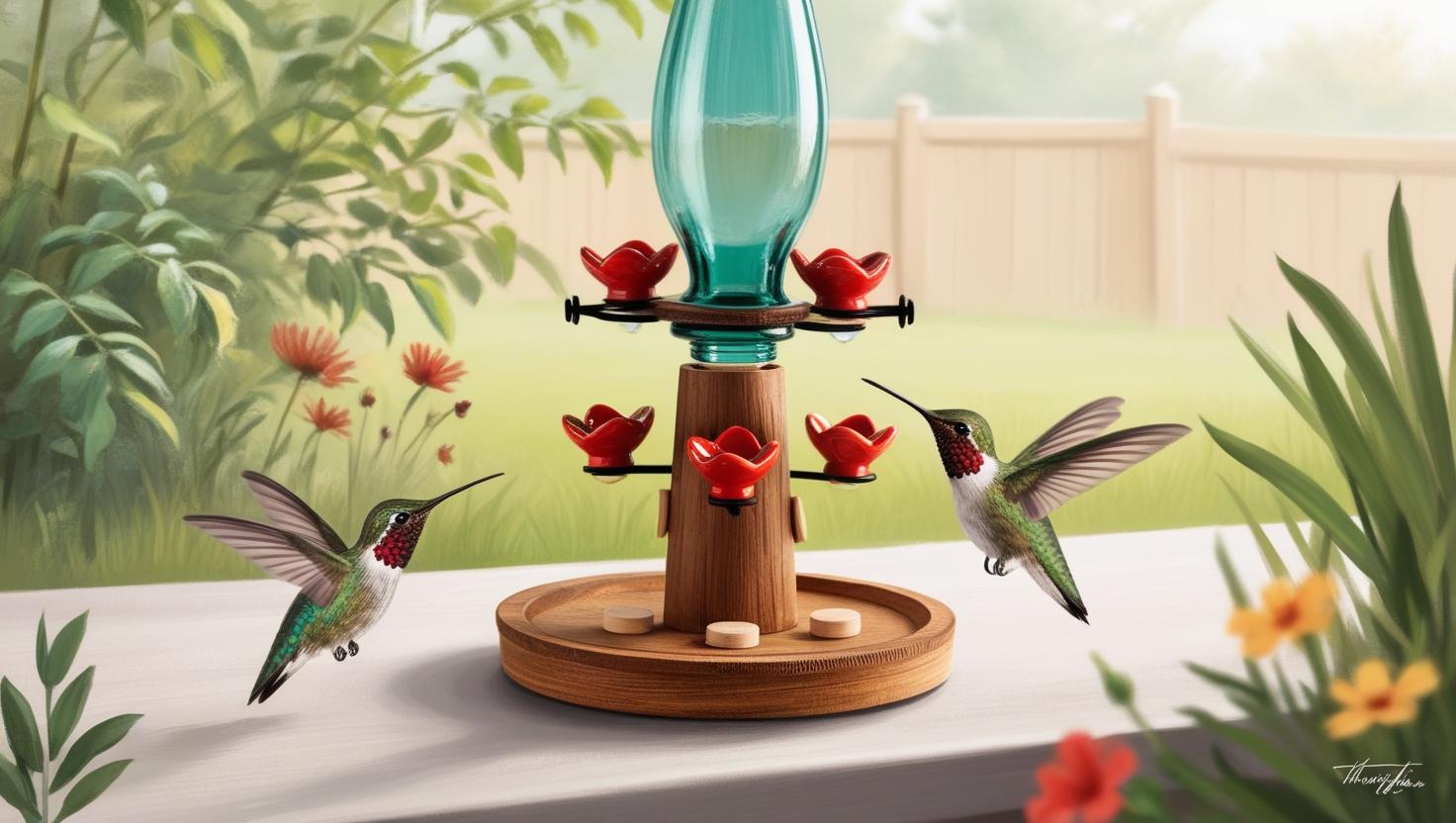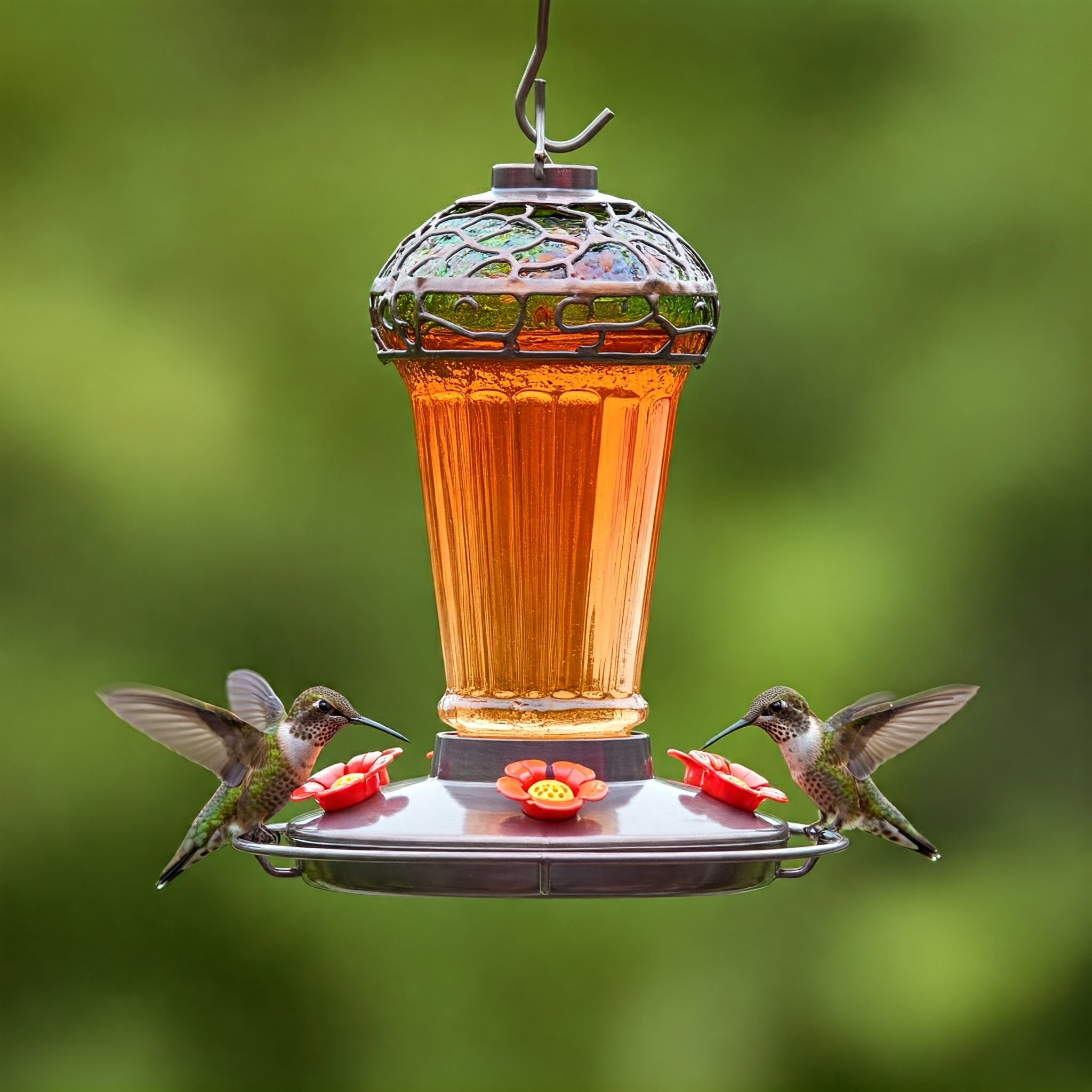Being all about eco-friendly choices today means seeing its benefits even in the smallest details, like hummingbird feeders. The shift to sustainable products isn’t just trendy; it’s smart. It’s about protecting our environment while still enjoying nature right in our backyards.
Eco-friendly decorative hummingbird feeders offer a unique way to enjoy and support wildlife. By opting for sustainable materials, we help reduce waste and prevent harm to the environment. Imagine hummingbird feeders made with recycled glass or bamboo. These choices not only cut down on plastic waste but also support industries that prioritize sustainability.
Hummingbird feeders are more than just a pretty garden accessory. They attract these incredible birds to our homes, contributing to local biodiversity. The presence of hummingbirds can aid pollination and help maintain the health of nearby flora. So, choosing eco-friendly options means supporting both the planet and local ecosystems.
This trend also reflects a broader awareness of how products we buy and use impact the earth. By integrating these feeders into our gardens, we make a little but significant commitment to the environment.
Choosing decorative feeders made from sustainable sources means green choices are also aesthetically pleasing. We can have everything – beauty, sustainability, and the joy of helping support the delicate balance of nature.
Types of Eco-friendly Materials for Hummingbird Feeders
Choosing the right material for a hummingbird feeder is more than just about looks. It’s about sustainability and durability. Recycled glass, for instance, not only gives feeders a beautiful, colorful appearance but also reduces landfill waste. It’s a win-win by adding charm to your garden while being gentle on the planet.
Bamboo is an excellent choice as it grows rapidly and is incredibly strong. Using bamboo means tapping into a resource that regenerates itself quickly, making it a sustainable option without compromising on quality. Feeders made from bamboo not only look good but also handle the elements well.
Steel is another resilient choice. It may not sound eco-friendly at first, but when recycled, it gives unused metal a new purpose. This material is robust and can withstand a lot of weather-related wear and tear, making your feeder a long-term investment.
Natural dyes and coatings add an eco-friendly yet aesthetic appeal to feeders. They ensure that while the feeders are attractive, they remain safe for birds. Besides, who wouldn’t love a feeder that catches the eye but doesn’t harm the environment?
The durability of these materials means feeders last longer, reducing the need for frequent replacements. This longevity not only respects your wallet but also supports less consumption overall, reinforcing your commitment to sustainable living.
Design Elements and Their Impact on Hummingbird Feeding Habits
The design of a hummingbird feeder can significantly influence how often these little birds visit your garden. It’s essential to understand that certain designs are more appealing to hummingbirds due to color, perching options, and even the feeder’s shape.
Bright colors, especially red, are known to attract hummingbirds. Designing feeders with colored glass or painted surfaces using eco-friendly dyes can create an inviting space for these birds. Additionally, feeders shaped like flowers can mimic the natural feeding grounds hummingbirds are drawn to.
The practical aspects of feeder design matter too. A feeder with multiple feeding ports allows several birds to feed at once, reducing territorial disputes and encouraging a bustling hum of activity. Incorporating perches in the design can also provide a resting spot, making your feeder more appealing than others lacking such features.
Placement of the feeder affects how effective these designs can be. Hummingbirds often opt for feeders placed near flowers or plants they naturally enjoy. Ensuring your feeder is within easy reach but safe from predators will provide a more secure environment.
Balancing aesthetics with functional design helps create a feeder that not only looks lovely in your garden but also serves the hummingbirds well. The right design enhances the birds’ feeding experience and ensures your backyard becomes a go-to spot for these vibrant creatures.
DIY Eco-Friendly Hummingbird Feeder Projects
Creating your own hummingbird feeder is not only a personal project but also a meaningful step towards sustainability. Using easily accessible materials makes it simple to start designing a feeder that’s both functional and eco-conscious.
For a simple project, recycled bottles make excellent bases for feeders. With a few tools, you can transform a glass bottle into a charming piece for your garden. Drill a small hole at the bottom, fit a feeding tube, and you’re almost done. Decorating the bottle with non-toxic, natural paints adds a splash of color and personality.
Old feeders lying around? They’re perfect candidates for a makeover. You can sand them down, repaint using eco-friendly products, or even add new features like perching sticks. This not only refreshes the look but also extends the life of the feeder, reducing waste.
Other common items like mason jars, wine corks, or even unused utensils are also great for DIY feeders. Their unique shapes add character and variety to your garden while promoting reuse. Experimenting with unconventional materials can also enhance creativity.
Crafting your own feeder isn’t just about the end product. It’s also a rewarding way to foster creativity and engage with nature in your garden. Moreover, these projects highlight resourcefulness, allowing you to take pride in contributing positively to your environment.
Caring for Your Eco-friendly Hummingbird Feeder
Keeping your eco-friendly hummingbird feeder in top condition ensures it remains functional and attractive. Regular maintenance is key to protecting both your investment and the hummingbird visitors it attracts.
Thorough cleaning is imperative to prevent harmful mold or bacteria that can harm the birds. Using natural cleaning methods like a vinegar-water solution is effective and safe. Avoid harsh chemicals that can leave residues harmful to birds. A soft-bristle brush helps reach those tricky spots and ensures an all-around clean.
Inspecting the feeder routinely for damage helps catch issues early. Check for any cracks in glass or bent parts in metal feeders that need mending. Proper upkeep not only guarantees the feeder’s longevity but also ensures a safe feeding spot for hummingbirds.
Seasonal changes require adjustments in care and placement. In colder months, consider placing your feeder in a spot that gets more sun to prevent the nectar from freezing. In warmer months, position it in shaded areas to keep the nectar fresher longer.
Always keep fresh nectar available, changing it every few days and flushing the feeder with clean water before refilling. This practice ensures the feeder remains inviting and healthful, encouraging hummingbirds to return.
With attentive care, your eco-friendly hummingbird feeder becomes a reliable and steadfast garden feature, providing a vibrant and safe haven for these tiny wonders year after year.


